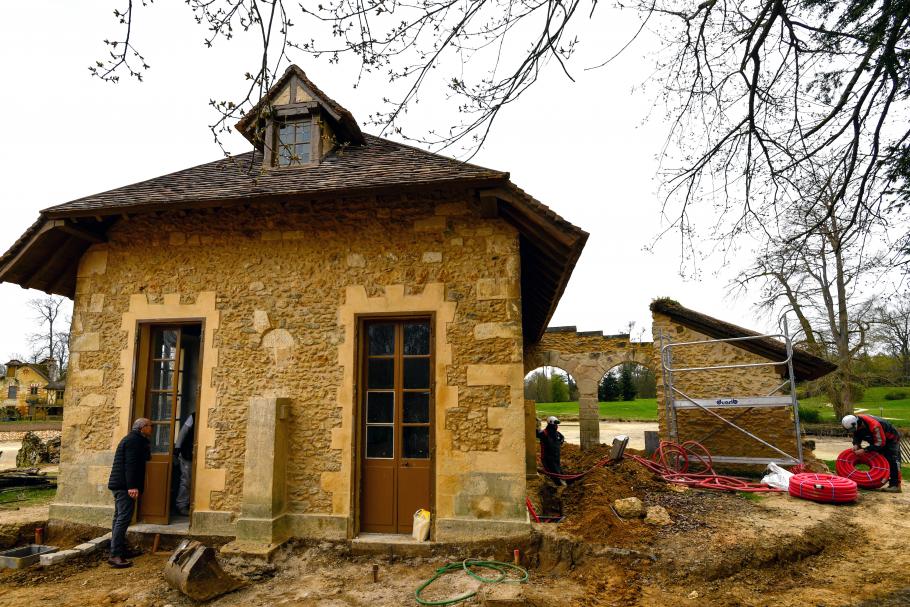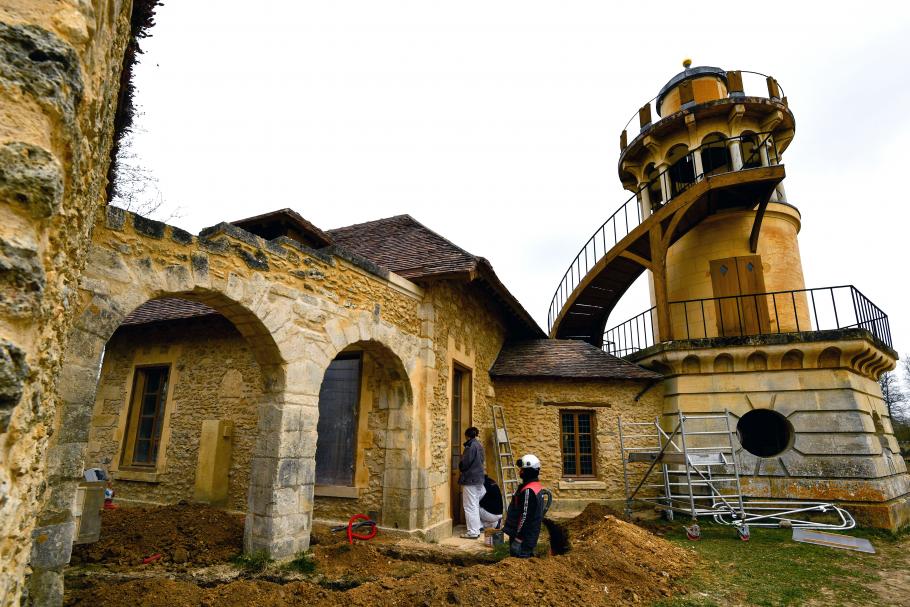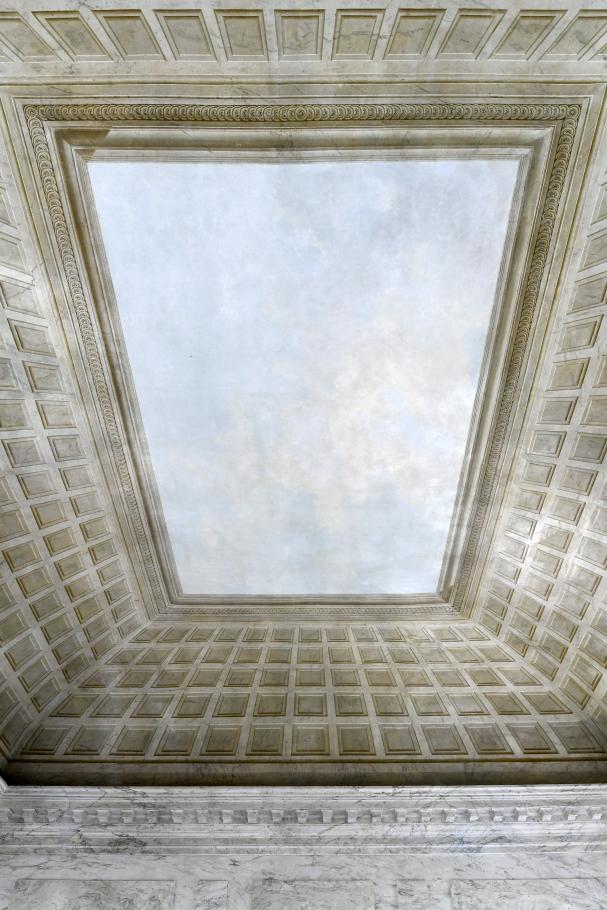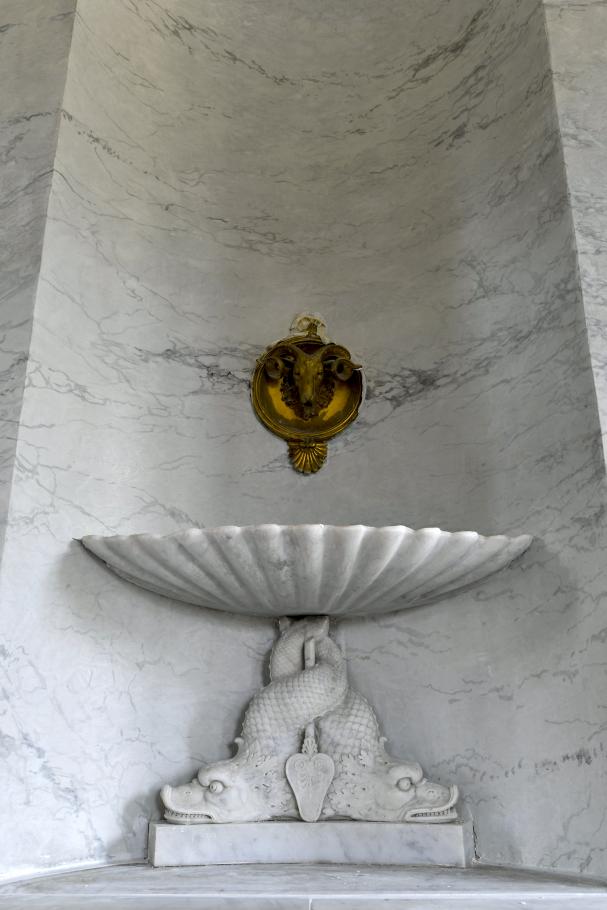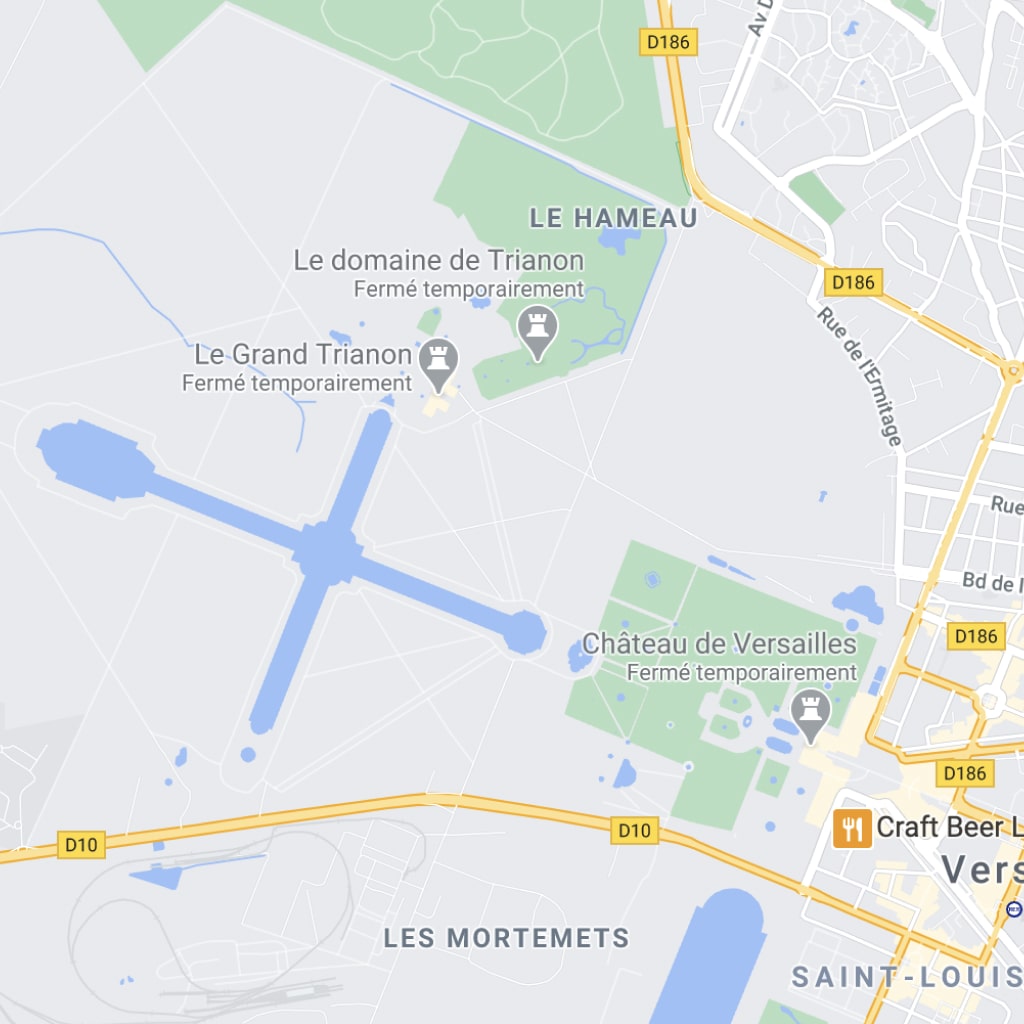The Working Dairy, located in the Queen’s Hamlet, was built in the 18th century as a venue to enjoy Estate-made dairy products. Today, the site is undergoing an extensive restoration aiming to recreate the refined environment of this “folly” prized by Marie-Antoinette.
Restoration of the Working Dairy
Inspired by Jean-Jacques Rousseau’s theories of returning to the state of nature, the Queen’s Hamlet in the Trianon Estate was built by architect Richard Mique between 1783 and 1787 at the initiative of Marie-Antoinette.
It originally comprised 12 buildings, their rustic exterior belying sophisticated interior design. The site was organised as a veritable village structured around a lake and featuring a working farm where crops were grown and animals raised.
Aerial view of the Queen’s Hamlet, before restoration © Château de Versailles/ Thomas Garnier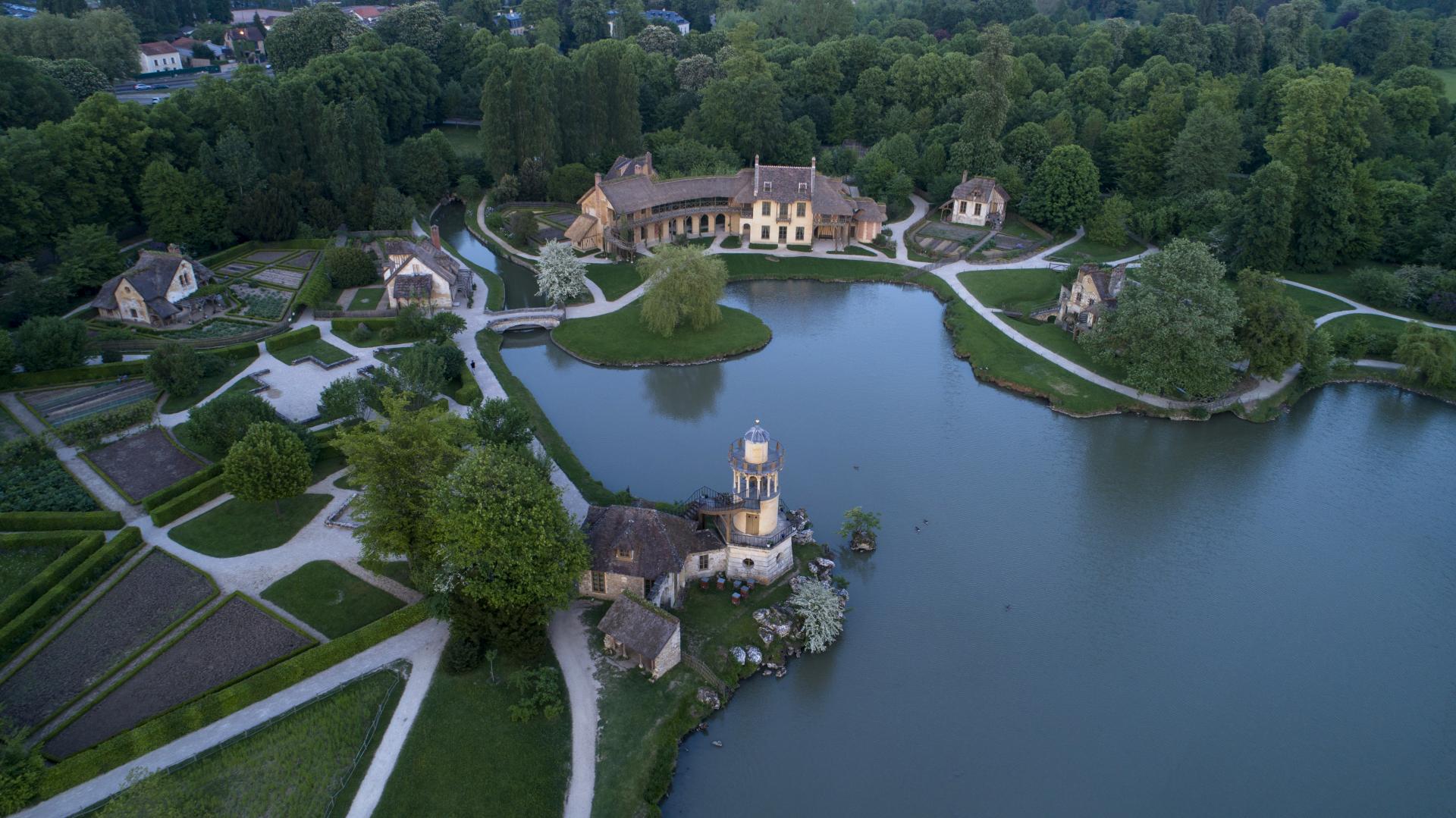
“The pleasure of roaming about the little village, to see the cows being milked and to fish in the lake, enchanted the Queen”
Madame Campan
The Working Dairy, a factory designed for the Queen’s pleasure
The Queen used the Working Dairy as a place to enjoy dairy products prepared in the adjoining workshop, the Model Dairy, which was demolished in the early 18th century. The Dairy is paired with “Marlborough Tower”, a belvedere-like structure from which the Queen and her guests would cast off for boat rides and fishing excursions.
Marlborough Tower, Working Dairy and Great Lake before restoration © Ch^teau de Versailles/ Thomas Garnier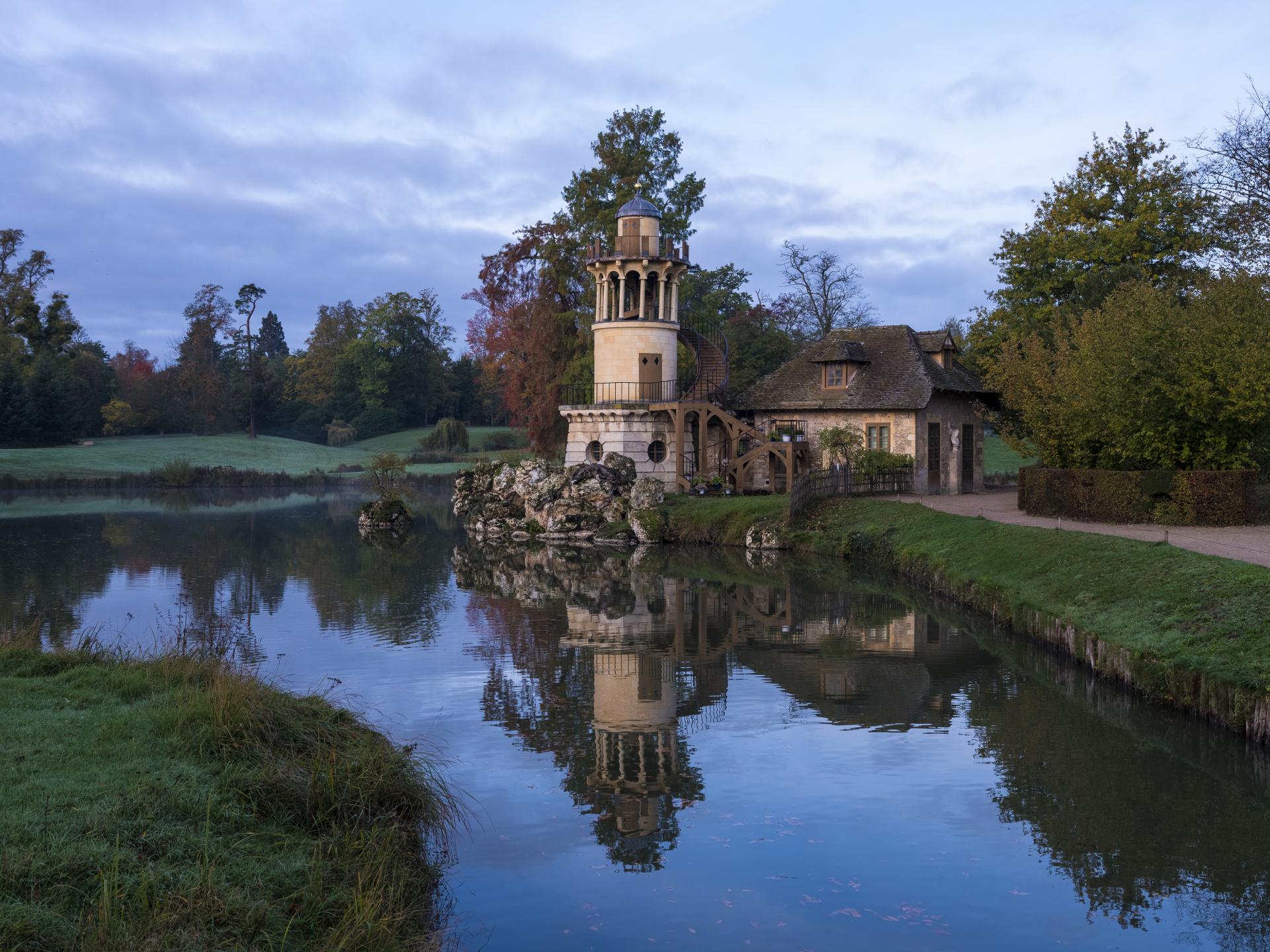
The Working Dairy is a small two-storey rectangular structure of pointed quarry stones with a flat-tiled roof featuring three skylights. The interior is made up of a single spacious room bathed in natural light thanks to four windows and three French windows adorned with stained-glass panes.
The floor is paved with marble flagstones. The walls were painted in faux-marble upon the restoration carried out during the First Empire. They are capped with a protruding cornice, also painted in faux-marble, which serves as the base for a vaulted plaster ceiling embellished with decorative coffers framing a trompe-l’oeil painting of the sky. Marble furnishings, including a central table and wall-mounted side tables, round out this exceptional interior design.
Interior of the Working Dairy before restoration © Château de Versailles/ Thomas Garnier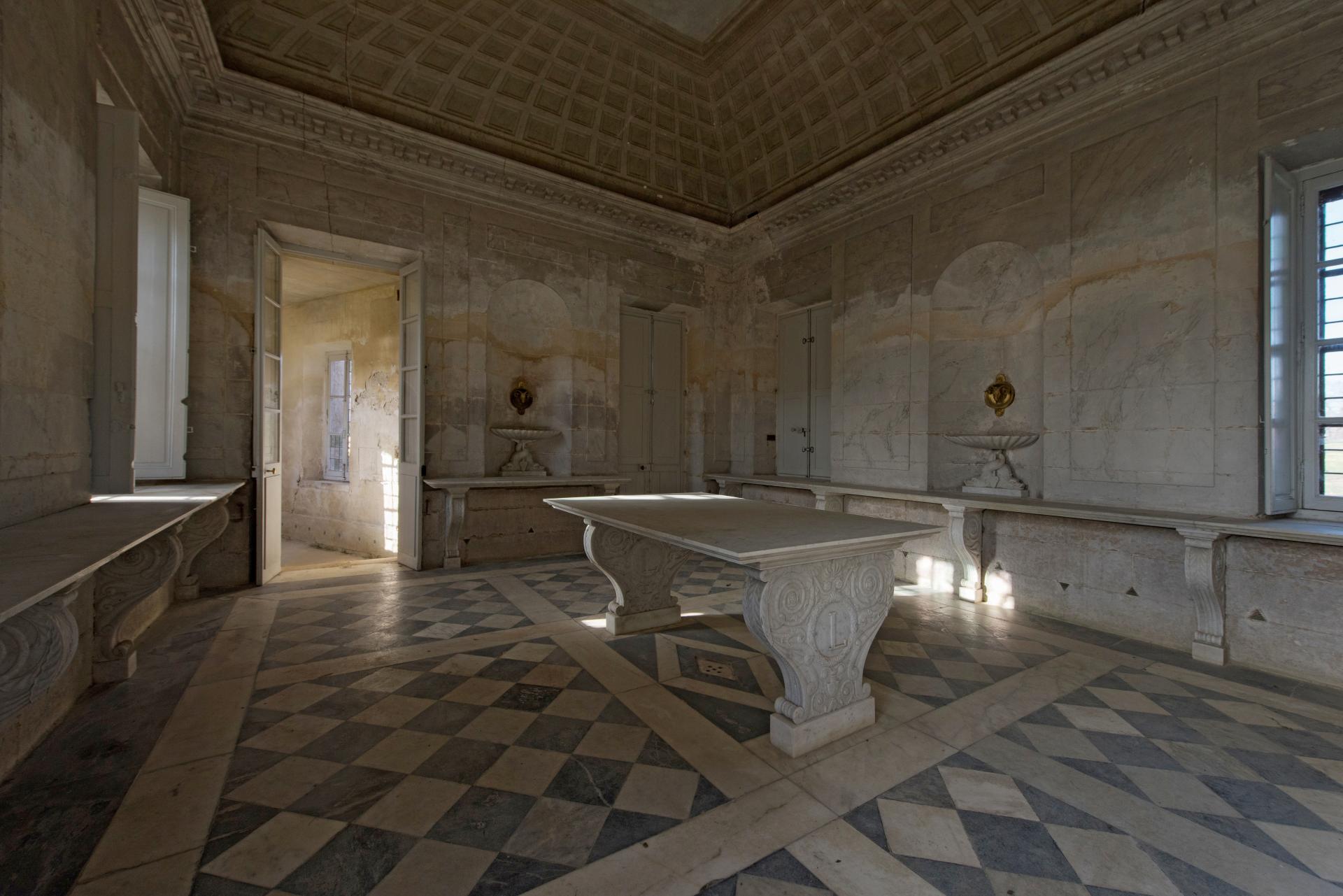
restoration work
Due to the sanitary condition of these buildings, restoration work had become a matter of urgency: the joinery was no longer watertight, the walls displayed cracks and visible signs of moisture, the marble furnishings were caked in dirt and the decorative items severely damaged.
The current Working Dairy restoration project concerns both the exterior and interior of the building. The passage leading to the lower room of Marlborough Tower will also be refurbished, along with the small circular room opening onto the Great Lake. The goal is to overhaul and reinforce the building’s structural elements while restoring the decorative splendour of the interior design. The project will preserve the current layout, which includes modifications implemented during the First Empire as well as additions under the reign of Louis Philippe.
The restoration of the Working Dairy is being carried out together with initiatives to refurbish the banks of the Great Lake and stone riprap located at the foot of the Marlborough Tower.
patron
The restoration of the Working Dairy and its surroundings is made possible thanks to the exceptional support of a private donor.




